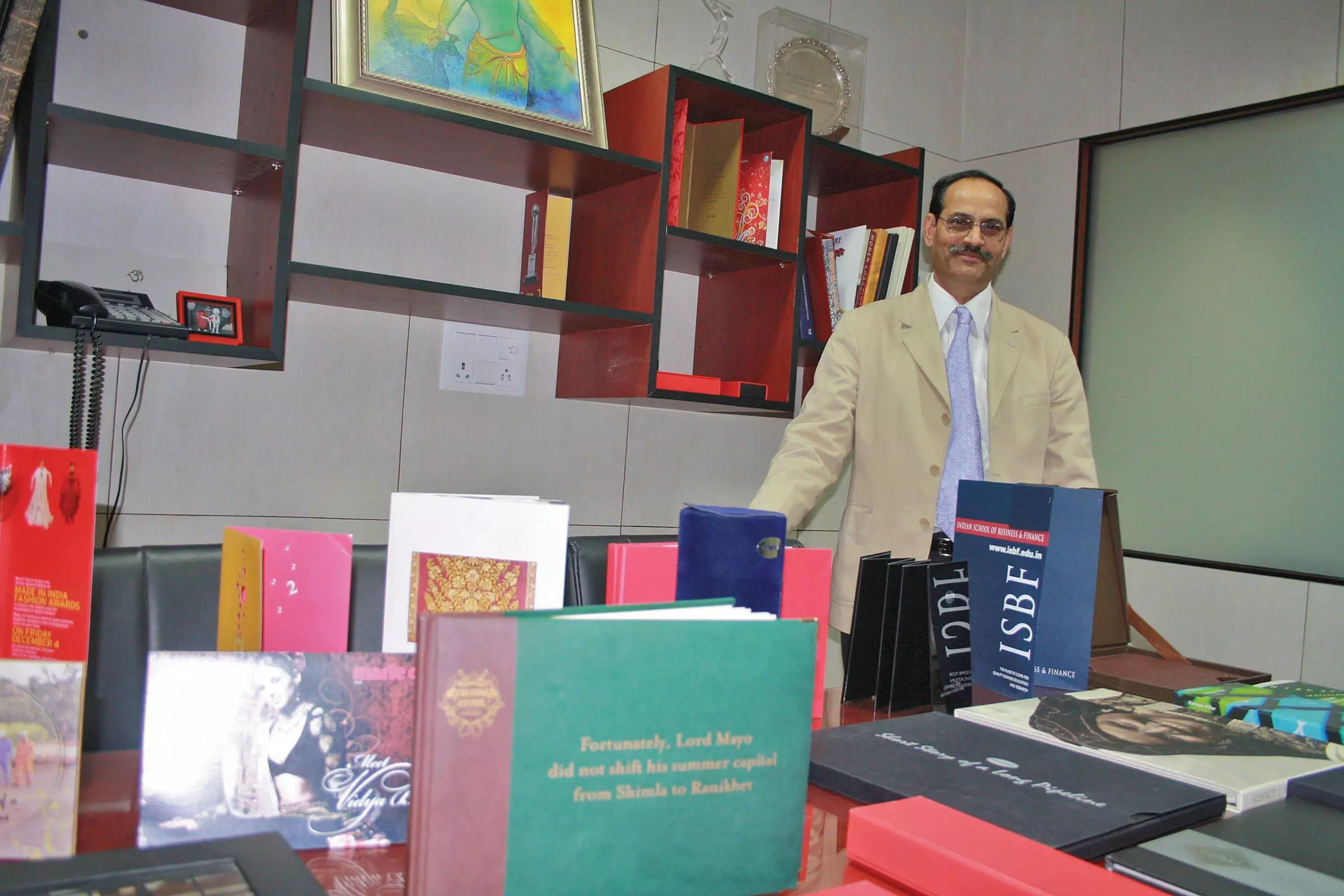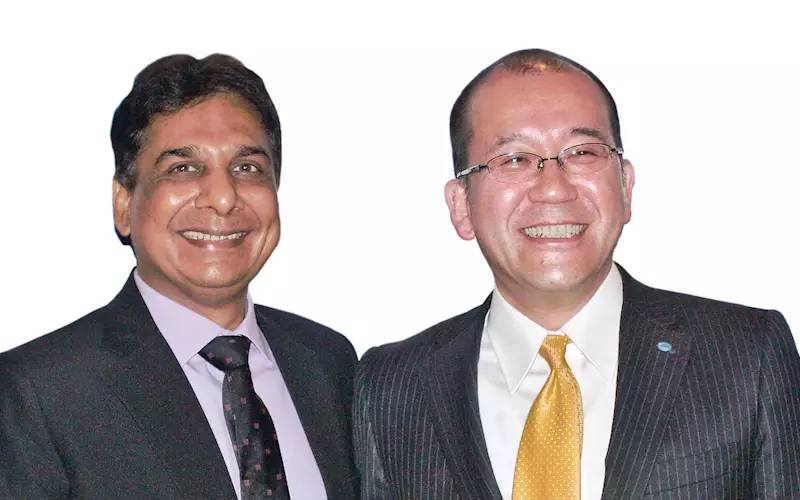What next after Konica Minolta’s acquisition of Monotech’s production printing business? The Japanese digital press manufacturer is upbeat about the buoyant Indian market and is looking forward to reaching out to the customers. Yuji Nakata, managing director, Konica Minolta India, explains to Rahul Kumar and Dibyajyoti Sarma
For the Indian print industry, the biggest news of the year so far, perhaps, is the acquisition of Chennai-based Monotech Systems’s production printing business by Konica Minolta Business Solutions India.
Come June, and Gurgaon-headquartered India operation of the Japanese press manufacturer will suddenly become a much bigger organisation, with more than 200 employees of Monotech becoming a part of the Konica Minolta team.
Monotech, one of Konica Minolta’s four channel partners in India, has been the prime mover of the company’s digital production printing segment since it set shop in India in 2010. Mototech helped Konica Minolta reach more than 1,000 installations in the country, and this is one of the reasons why industry insiders are little confused. What made the press manufacturers dismantle an already successful model?
Announcing the acquisition, Yuji Nakata, managing director, Konica Minolta India, said the idea behind the acquisition was to move closer to the customers and help them develop value. “We want to expand the frontiers of the digital world,” he said, “We want to contribute to the growth of Indian printing industry.”
If there is something more, the company is not telling. Even there is no mention of how much cash changed hands. The industry, however, is rife with speculation. The news is, after the acquisition, the value of Konica Minolta shares went up a notch in the Japanese stock exchange. This is a pointer how important the India market is for both Japan and Konica Minolta.
|
YUJI NAKATA UNPLUGGED |
|
Which printing segment is the most vulnerable to Konica Minolta?
Konica Minolta works on the principle of harmonics. Our aim is to create value through the digital press so that it will enhance the ability of our customers to deliver value to their clients.
How unique is the Indian market?
It is unique in many ways. The diversity of the Indian cultural landscape offers tremendous opportunity for the use of colour. The wedding album application we developed with our unique Bizhub Press C70hc is an example.
How to do you look back at Konica Minolta’s five-year-old stint in India?
We are glad we could play a significant role in the development of the digital press in India. We thank our customers for their support and feedback.
What is the state of the Indian market?
We believe the Indian market is still in the growth phase and we can continue to contribute to this growth.
The key to your success?
Maintaining a clear focus on customer satisfaction.
How easy or difficult was it to settle down in India after having worked in other parts of the globe?
I am enjoying my stint in India.
How do you explain relevant and appropriate technology for India?
Technology is global. Adopting it to the Indian market and creating value for the customers is the key. Our presence here strengthens our ability to do so.
|
A few days after the acquisition announcement, when we meet, the top brass of the company is busy with overseeing the transition, and they are upbeat about the market and what Konica Minolta can achieve in the future. We are told that the company is excited to go to the market directly and interact with the customers and help them achieve the best they can in providing print solutions.
This is not to say that the company was not in touch with its customers earlier. Even when it had four channel partners in India (Besides Monotech, the other three are TechNova Imaging Systems, KMI Business Technologies and HCL Infosystems), it had its own corporate office and its own channel of reaching out. Among other things, it set up demo centres in Gurgaon, Mumbai, Chennai and Bengaluru, where printers can come and witness various different ways of doing the job.
So, the million dollar question is what changes after the acquisition? “We will continue to strengthen our other partners’ capabilities, and our Digital Imaging Square will remain open to them. Our direct access to customers will help us increase our ability to add value to our customers. And, we will redeploy these learnings through our partners as well,” says Nakata.
And, no, the company has no plans to take over the remaining channel partners. Nakata says the partners bring in their tremendous strength in terms of market reach and their relationship with their customers. “We believe this move will help all the stakeholders deliver more value to our customers,” he adds.
But, there are works to do following the takeover, in terms of defining roles for the staff, developing infrastructure and so on. On this, Nakata exudes confidence. This year, the theme is ‘Synergy’, he says, adding, “We have clear plans on developing the infrastructure. Some of it is already in place. Now, we will rapidly expand to over 20 branches and over 40 touch points for customer interactions. We also have a clear roadmap for people, their roles and development of capabilities.”
One thing is clear. The acquisition reveals Konica Minolta’s bullish approach to the Indian market. Nakata believes the Indian market is still on the growth phase. “We, as market leaders, have the responsibility to expand the market. We have taken many initiatives to enhance the skill set of our customers, like their colour management processes, developing new applications for their end customers, etc. This will help our customers add more value to their offerings and enlarge the scope of the digital press in India,” he argues.
According to Nakata, Konica Minolta has grown consistently in excess of 25% year-on-year in India and we will strive to maintain this momentum.
Nakata reiterates that the direct access will help the company create new value to its end customers. “The more value we create, the higher will be the customer satisfaction,” he says. “We would like to continue to deliver value to our customers and ensure customer satisfaction. And, of course, expand the scope for digital in India.”
Right now, Konica Minolta may be the market leaders, but competition is not far behind. There are several multinational brands chasing it. Nakata is not worried about it, not at this point at any rate. “Competition will always exist,” he says, “It is our job to continue to deliver value to our customers and ensure customer satisfaction. This is our clear focus.”
The Digital Imaging Square established in Cybercity, Gurgaon is a resource for the industry to experiment and develop new applications. With the introduction of MGI, we felt the need to offer this capability to the industry in this space too. Hence, we have invested in a new Digital Innovation Centre to work closely with the industry and develop new value in India.
V Balakrishnan, executive general manager – marketing division, Konica Minolta
CUSTOMER SPEAK
 MN Pandey
MN Pandey, owner of Delhi-based
Avantika Printers, who has two kits manufactured by Konica Minolta and supplied by Monotech Systems, is expecting more from the recent acquisition. “We have been getting excellent service support from Monotech since the installation of the machines. You can call it a personal treatment,” says Pandey. “Now, I guess, it will become software-oriented and professional approach, from 1 June onwards.”
Avantika has Konika 6000 series colour and Bizhub 1250 mono. While Pandey says it would be difficult to comment on the new approach, as the company is yet to take over the services, he believes the system will work more efficiently than personnel attention “But it will take time,” he adds, “As a professional, I believe in system-driven workflow whether at workplace or in after-sales and services. We are hoping for the best, as the entire team (which was earlier Monotech) will remain the same.”
MONOTECH'S INPUTS SQUARE | IN A SELLER'S MARKET
As Monotech parts ways with its digital production printer business, it now wants to focus on introducing new products and technologies in the market, says Tej Prakash Jain of Montech Systems
With more than 1,000 installations, Monotech was the biggest Indian representative of Konica Minolta. What prompted the decision to sell it?
In the last 15 years, we had successfully introduced new technologies in the field of pre-press, digital printing and print enhancement. Konica Minolta has been an extremely successful product for Monotech and a growth enabler. We achieved the leadership position in digital production printing market in India, and many landmarks even within Konica Minolta’s global performance parameters, like highest number of 70hc installations worldwide and second highest number of installations of mid-production engines worldwide. Having scaled up the business to a good level, Monotech will like to get back to what it does best – introducing a number of new products and technologies in the market in coming days.
You have sold around 55% of your total business. How will you fill the gap? Your plans for the future?
Taking the concept of Make in India forward, Monotech will make manufacturing activity as one of its core though the distribution of high-technology equipment will continue to be the big growth driver. We have strong market positioning for our Jetsci Imprint solution in India and will be launching a number of products with inkjet technology, both in narrow format for label, publishing, transaction and transforming markets and in wide format for textiles, signage and industrial printing markets. We shall explore international markets for some of these products.
In the growing digital press market in India, how do you make a distinction between short-term and long-term targets?
The digital printing has shown the resilience despite the economic slowdown in the past few years. There has been growth in terms of both equipment placement and digital print volume. The market is waiting in wings and any breakthrough solutions will be adapted very quickly and may disrupt the current ways of production printing. The short-term target will be more penetration and the long-terms target will be to disrupt the existing ways and replace it with something more efficient, effective, productive and personalised.
 MN Pandey, owner of Delhi-based Avantika Printers, who has two kits manufactured by Konica Minolta and supplied by Monotech Systems, is expecting more from the recent acquisition. “We have been getting excellent service support from Monotech since the installation of the machines. You can call it a personal treatment,” says Pandey. “Now, I guess, it will become software-oriented and professional approach, from 1 June onwards.”
MN Pandey, owner of Delhi-based Avantika Printers, who has two kits manufactured by Konica Minolta and supplied by Monotech Systems, is expecting more from the recent acquisition. “We have been getting excellent service support from Monotech since the installation of the machines. You can call it a personal treatment,” says Pandey. “Now, I guess, it will become software-oriented and professional approach, from 1 June onwards.”










 See All
See All